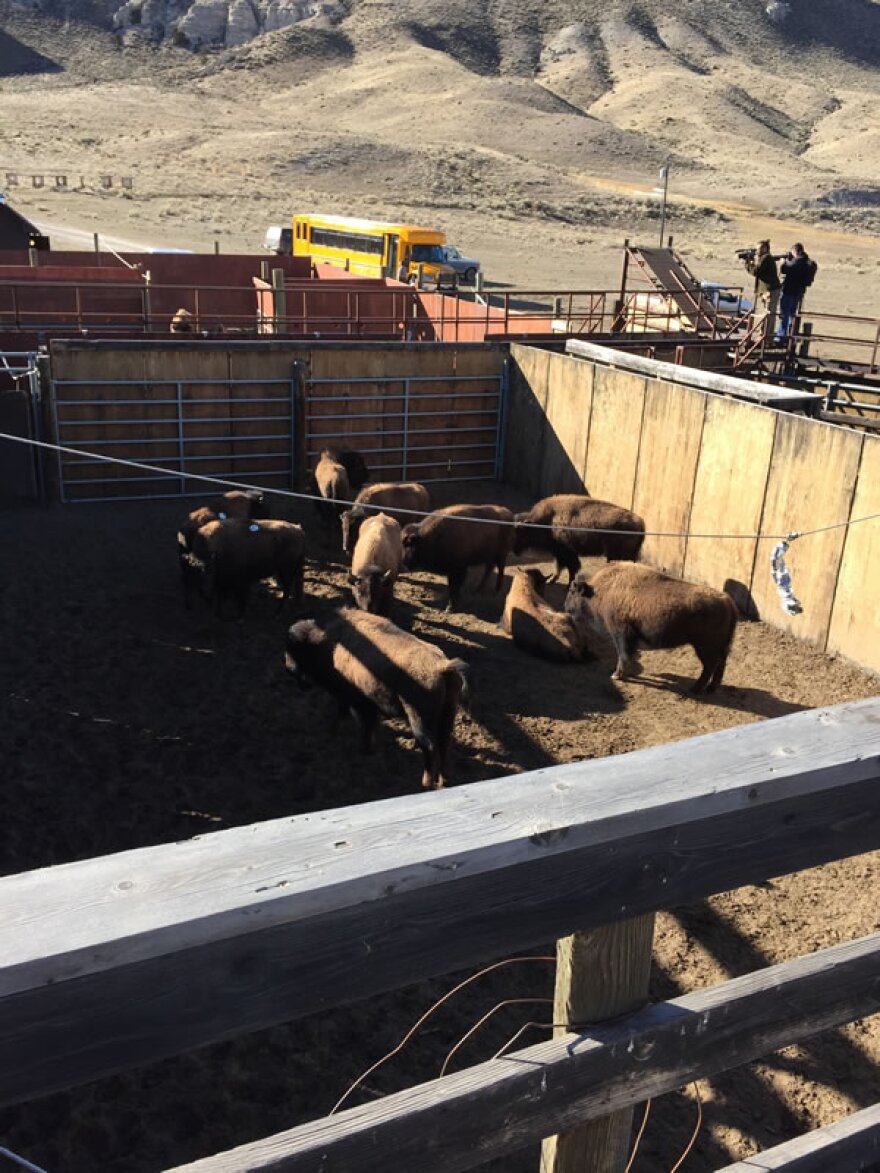Another nearly 4-dozen Yellowstone National Park bison are scheduled to be loaded up today at the Stephens Creek Capture facility and delivered for slaughter in Big Timber and Columbus.
It’s part of the population control measures spelled out under the Interagency Bison Management Plan.
Yellowstone officials held a tour of the Stephens Creek facility yesterday.
Rick Wallen is the lead wildlife biologist for Yellowstone’s bison program.

He says based on the population estimate, the Interagency Bison Management team members decided on how to reduce the northern herd’s population this winter.
"The hunter harvest goals for this winter were 400 to be removed and the Stephens Creek was basically directed to remove 500 animals."
Several tribes get the slaughtered bison meat. Four tribes also have long standing treaty rights to hunt Yellowstone bison. Montana also issues hunting permits. The harvest, at nearly 170 animals so far, is below that goal.
Some of that may be due to weather.
During the winter, bison often migrate outside the park’s boundaries into Montana in the search for food. But Wallen says the recent warm temperatures have impacted that movement.
"So this year’s early melt out has resulted in animals finding plenty of food available to them," said Wallen. "There was a pretty big movement from about a week and a half to 10 days ago when we had 500 animals in the basin. We had an extremely warm batch of weather for five to six days. We basically saw the animals move out and back to the interior of the park."
The grounds around the Stephens Creek capture facility yesterday were dusty brown. Numerous herds of antelope grazed nearby.

Backcountry Ranger Brian Helms says any bison that do leave the park’s boundary are allowed to wander around and past the capture facility. Helms says the reason for that is simple; bison aren’t like domestic cattle.
"We can’t catch ‘em, bringing them to a spot where they’ve never been," said Helms. "It’s like herding cats. So we have to let them go beyond the facility and bring them back to an area where they’ve already been."
Helms says the number of bison that leave Yellowstone varies from year to year. He says at times last year there were some 500 animals hanging around the capture facility. He says they quickly learned they could get an easy meal if they followed the tractor that brings hay to the holding corrals.
Helms stood on a catwalk and could over look about 60 captured bison were eating hay in a large paddock, while another 4-dozen are in being held in nearby smaller holding pens surrounded by plywood.
Before being put in the pens, blood was drawn as a health check then the bison were put into smaller holding pens.
"So what we did today was we sorted them according to size which is typically what we do. We sort them into cows, calves, young cows and bulls. So that’s what you’re seeing up here is how we sorted them."
When asked if the bison are tested for brucellosis, Helms replied, "everyone of them was tested."
And if they test negative are they put somewhere else?
"At this point, everything we’re capturing is going to slaughter," Helms said.
The capture and slaughter program is criticized by wildlife advocates, some politicians, and others as unnecessary. They argue there’s been no documented case of transmission of brucellosis from Yellowstone bison to cattle. The agriculture industry argues infected bison threaten their brucellosis-free status. The disease can cause cows to abort. In humans it causes flu-like symptoms.
The terms of the capture and slaughter program is spelled out in the 15-year old Interagency Bison Management Plan that’s the result of a court mediated settlement with the state of Montana.
Yellowstone spokesman Al Nash says last year the National Park Service and the state of Montana started a process to look at developing a new bison management plan. The next step is a public scoping process.
"We recognize we have some experience and there’s certainly been new scientific knowledge since the IBMP was created in 2000," said Nash. "We want to be able to analyze that and see if its possible for us to come up with a new bison management plan."
He expects the Environmental Impact Statement process may begin later this year.
In the meantime, officials expect to wrap up this year’s capture and slaughter program around the first week in March.




